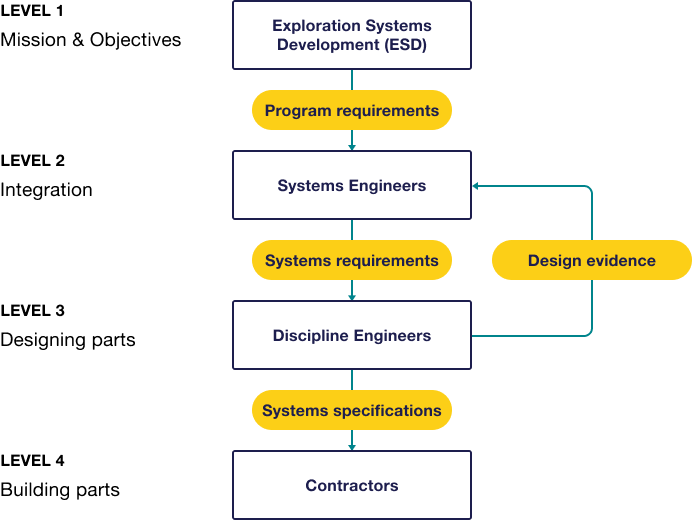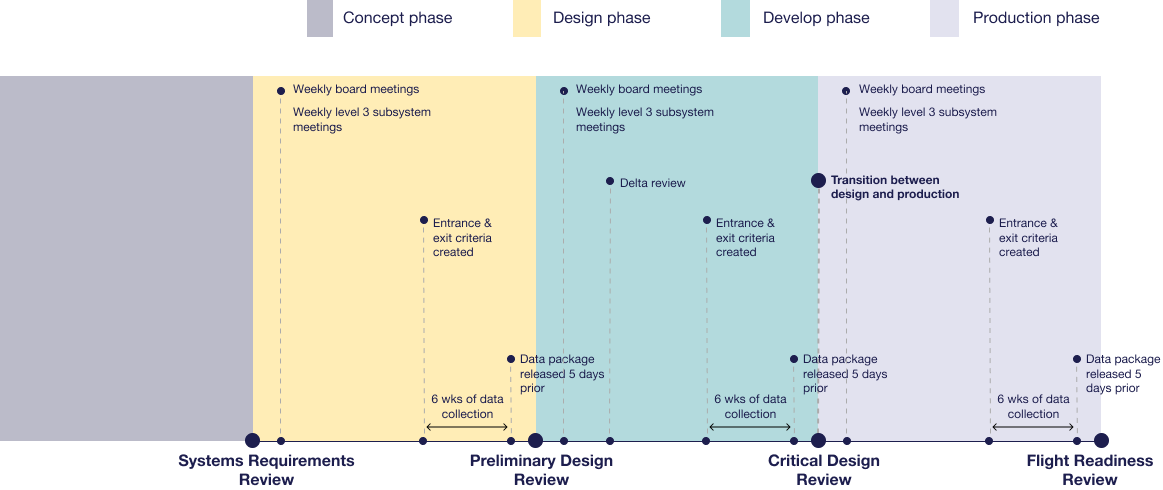Cheatsheet
Rocket design is a complex business, and NASA terminology can be difficult to grasp. We’ve created this Cheatsheet as a reference to understand the context and terms relevant to our project.
NASA’s Space Launch System, or SLS , is an advanced launch vehicle that provides the foundation for human exploration beyond Earth’s orbit. SLS is the only rocket that can send Orion, astronauts and large cargo to the Moon on a single mission.
SLS is powerful enough to send the Orion spacecraft beyond the Moon. For Exploration Mission-1, Orion will travel 280,000 miles from Earth—farther in deep space than any spacecraft built for humans has ever ventured.

Requirement is defined as “the agreed-upon need, desire, want, capability, capacity, or demand for personnel, equipment, facilities, or other resources or services by specified quantities for specific periods of time or at a specified time expressed as a “shall” statement.”
Logical decomposition identifies the “what” that should be achieved by the system at each level to enable a successful project. Utilizes functional analysis to create a system architecture and to decompose top-level (or parent) requirements and allocate them down to the lowest desired levels of the project.
It will take years to design and develop the SLS. To ensure the SLS is successfully moving forward and adhering to schedule, NASA engineers perform periodic milestone reviews. Milestone reviews are checkpoints in the rocket design process where representatives from each discipline team come together and share completed work and progress. The development of SLS is broken into several phases (shown below). Program milestone reviews occur at each transition point, and team milestone reviews occur throughout the phases. During reviews, designs are compared against NASA maturity standards.
